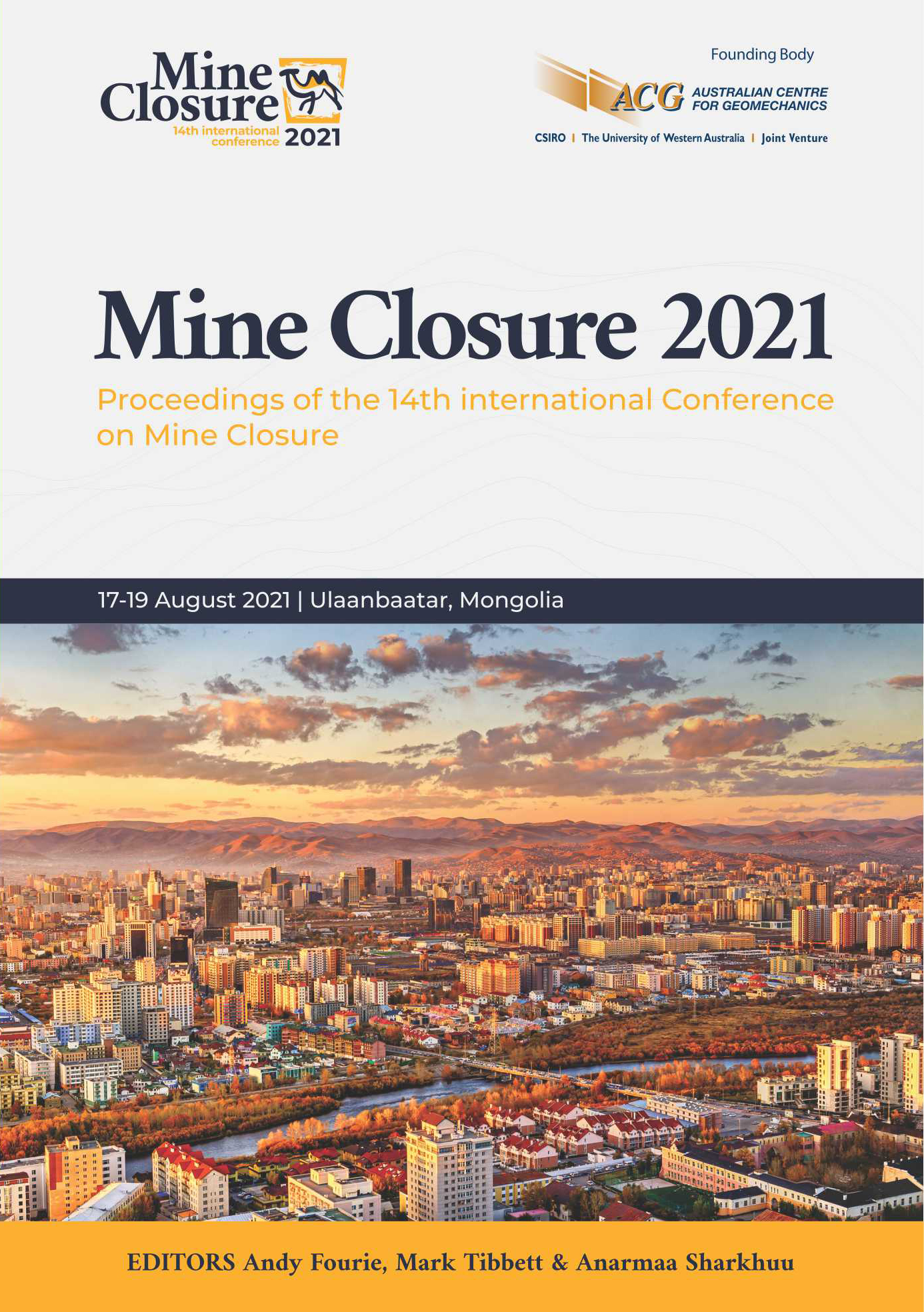Wanagon overburden stability; Grasberg surface mine closure

|
Authors: Mahayasa, M; Simanjuntak, M; Johnson, M |
DOI https://doi.org/10.36487/ACG_repo/2152_04
Cite As:
Mahayasa, M, Simanjuntak, M & Johnson, M 2021, 'Wanagon overburden stability; Grasberg surface mine closure', in AB Fourie, M Tibbett & A Sharkuu (eds), Mine Closure 2021: Proceedings of the 14th International Conference on Mine Closure, QMC Group, Ulaanbaatar, https://doi.org/10.36487/ACG_repo/2152_04
Abstract:
The key objective of managing overburden from a mine closure perspective is to ensure the overburden stockpile remains stable long-term. This is accomplished by using effective environmental and safety controls that minimize environmental impacts and financial risk to the company after the mine is closed. Grasberg surface mine was one of the world’s largest copper and gold mining operations until mining there ceased in January 2020. It is operated by PT Freeport Indonesia (PTFI) and located in Papua Province, Indonesia. Grasberg is now focused on mine closure activities, including overburden stabilization, infrastructure demolition and reclamation. The Wanagon overburden stabilization is a large scale and technically challenging project focused on mitigating slope stability and overburden erosion rates. The drainage below the Wanagon Overburden Stockpile (OBS) routes by a mountain village and joins with the existing mill tailings system referred to as the ModADA (Modified Ajkwa Deposition Area). To create a long-term stable landform at the Wanagon Overburden Stockpile, it will be regraded to a 2:1 slope for single-slope heights of 45 to 60 m, creating sufficient catch benches for the drainage system to manage flows on the stockpile. There are 24 catch benches that effectively flatten the 1,000 m slope height to an overall slope of 3:1. The slope surface has been armored with engineered rock cover D50 = 55 mm to reduce erosion potential. This paper presents various design development challenges, such as geotechnical structure, civil structure of the drainage system, water management (surface and subsurface), erosion, geochemistry, reclamation and revegetation.
References:
Geotechnical Services Department 2017, ‘Management of Overburden Placement at Lower Wanagon Stockpile with Geotechnical and Geochemical Consideration ‘, Standard Operating Procedure
Milliman, GD 1995, ‘Sediment Discharge to the Ocean from Small Mountainous Rivers: The New Guinea Example’, Geo-Marine Letters vol. 15 pp. 127-133
Stantec 2016, ‘Lower Wanagon Overburden Stockpile Closure’, Civil Construction Phase Stage 1 Design Report
Widijanto, E, Setiawan, I & Prasetyo, G 2015 ‘Dedicated Underground Drainage Drift for Dewatering Wanagon Overburden Stockpile, Grasberg Mine – PT. Freeport Indonesia’, Prosiding TPT XXIV dan Kongres Perhapi 2015
© Copyright 2025, Australian Centre for Geomechanics (ACG), The University of Western Australia. All rights reserved.
View copyright/legal information
Please direct any queries or error reports to repository-acg@uwa.edu.au
View copyright/legal information
Please direct any queries or error reports to repository-acg@uwa.edu.au
